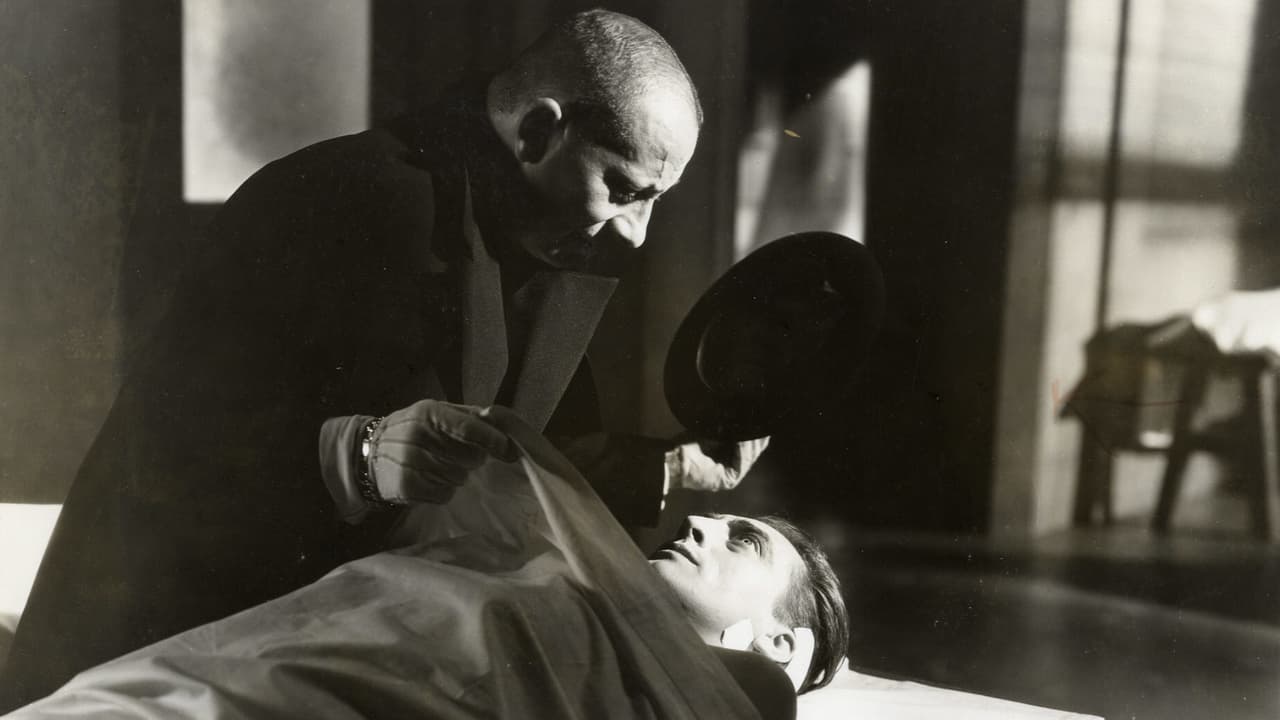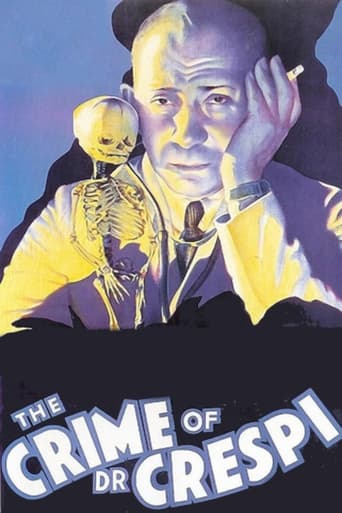Phonearl
Good start, but then it gets ruined
SpunkySelfTwitter
It’s an especially fun movie from a director and cast who are clearly having a good time allowing themselves to let loose.
Chirphymium
It's entirely possible that sending the audience out feeling lousy was intentional
Rosie Searle
It's the kind of movie you'll want to see a second time with someone who hasn't seen it yet, to remember what it was like to watch it for the first time.
JohnHowardReid
Erich Von Stroheim (Dr Andre Crespi), Harriet Russell (Mrs Estelle Ross), Dwight Frye (Dr Thomas), Paul Guilfoyle (Dr Arnold), John Bohn (Dr Ross), Geraldine Kay (Miss Rexford), Jeanne Kelly (Miss Gordon), Patsy Berlin (Jeanne Ross), Joe Verdi (expectant father), Dean Raymond (minister).Director: JOHN H. AUER. Screenplay: John H. Auer. Story: John H. Auer, suggested by the short story, "The Premature Burial", by Edgar Allan Poe, as adapted by Lewis Graham and Edwin Olmstead. Photography: Larry Williams. Film editor: Leonard Wheeler. Art director: William Saulter. Make-up: Fred Ryle. Music director: Milton Schwartzwald. Production supervisor: W.J. O'Connor. Sound recording: Clarence R. Wall. RCA Victor Sound System. Associate producer: Herb Hayman. Producer: John H. Auer. A JHA Production. Executive producer: Max Hoffman. Copyright 16 October 1935 jointly by Liberty Pictures Corporation and Republic Pictures Corporation. Filmed at the old Biograph Studios in New York. U.S. release through Republic: 21 October 1935. New York opening at the Rialto: 12 January 1936. 7 reels. 66 minutes.SYNOPSIS: Famous surgeon has a score to settle with his rival.COMMENT: John H. Auer was certainly one of Republic's more imaginative directors, and here, in his initial venture for that studio (the film was actually purchased by the Herbert J. Yates combine after it was completed for Max Hoffman's Liberty Pictures), he displays an even greater inventiveness in creating an effectively eerie atmosphere and some wonderfully sinister effects on a minuscule budget. His biggest expense was no doubt the hiring of Erich Von Stroheim for the title role. And Von Stroheim's services were certainly worth the money. The "Von" gives a captivatingly charismatic performance, using all the props and bits of business at his command to give extra power to his portrait. Whether bawling out an associate or evilly planning the demise of his rival, Von Stroheim is always in control. So much so, in fact, that the rest of the players, with the sole exception of Dwight Frye, have little chance to impress. Never mind, it's "the man you love to hate" who attracted picture- goers and the other actors were well aware of that fact. Thus Crespi is Von Stroheim's movie. And Auer's.
kitchent
Although certainly not up to the standards of the competition over at Universal, this little horror film provides enough good moments to warrant at least a look. Stroheim is wonderful, and it's always a treat to see Dwight Frye in anything.There are some great moments, all involving Stroheim, but some of the best scenes are ruined by sloppiness either in direction or editing. Stroheim's best scene is where he gloats above his paralyzed victim, but the scene is choppy and the edits are so jarring that it's simply a tribute to the actor that the scene works at all.The funeral scene, however, is very well done. The intercutting between the funeral and the restrained Frye attempting to kick his way to freedom is very good, and continually reminds the viewer of the fate of the poor man in the coffin. The subjective camera angle as the dirt hits it was probably pretty strong stuff in 1935.If your a fan of horror movies, especially 1930's films, this one should be on your list to view.
Mike-764
Famed surgeon Andre Crespi is called on the perform a life saving operation on Dr. Stephen Ross, a man who won the heart of the woman (Estelle) that Crespi had fallen for. Crespi manages to perform a successful operation, but during the recuperation, he gives a drug to Ross that gives him the appearance of death. When Ross is pronounced "dead", Dr. Thomas (a staff member at Crespi's hospital) suspects Crespi of killing Ross, but Crespi overwhelms Thomas, and locks him in a closet while Crespi attends the funeral and burial, with Ross still alive. Not sure of what Crespi did, Thomas and colleague Dr. Arnold dig up Ross' body for an autopsy, but when Ross "comes back from the dead", what will happen next? Intriguing film based on Poe's "Premature Burial" with a very sly, mad performance by Von Stroheim and very well done subdued performances by the rest of the cast. The film was shot in the Bronx, so production values are not the peak of excellence, but even the direction could have been better with many close-ups and shots of the actors that are a few seconds too long. A score to the film would have helped, and the romantic subplots w/ the doctors & nurses (2 of them) detract from the main story, but the story is enough to help this B movie. Rating, 6.
Anne_Sharp
Even though Erich von Stroheim privately referred to this film as "The Crime of Republic," he delivers one of his most gracefully modulated early sound performances in this beguiling low-budget shocker. One of the better examples of the mad-doctor-gets-revenge-against-normal-man-who-stole-his-girl genre of the mid-thirties ("The Raven," "Murders in the Zoo," "Mad Love"), "Crespi" is made especially memorable by its low-key, dapper star, who wears designer lab coats, keeps a baby skeleton in his office as a sort of mascot/alter ego, and shows a refreshing lack of patience with the earnest, romantic idiots he's surrounded with.

